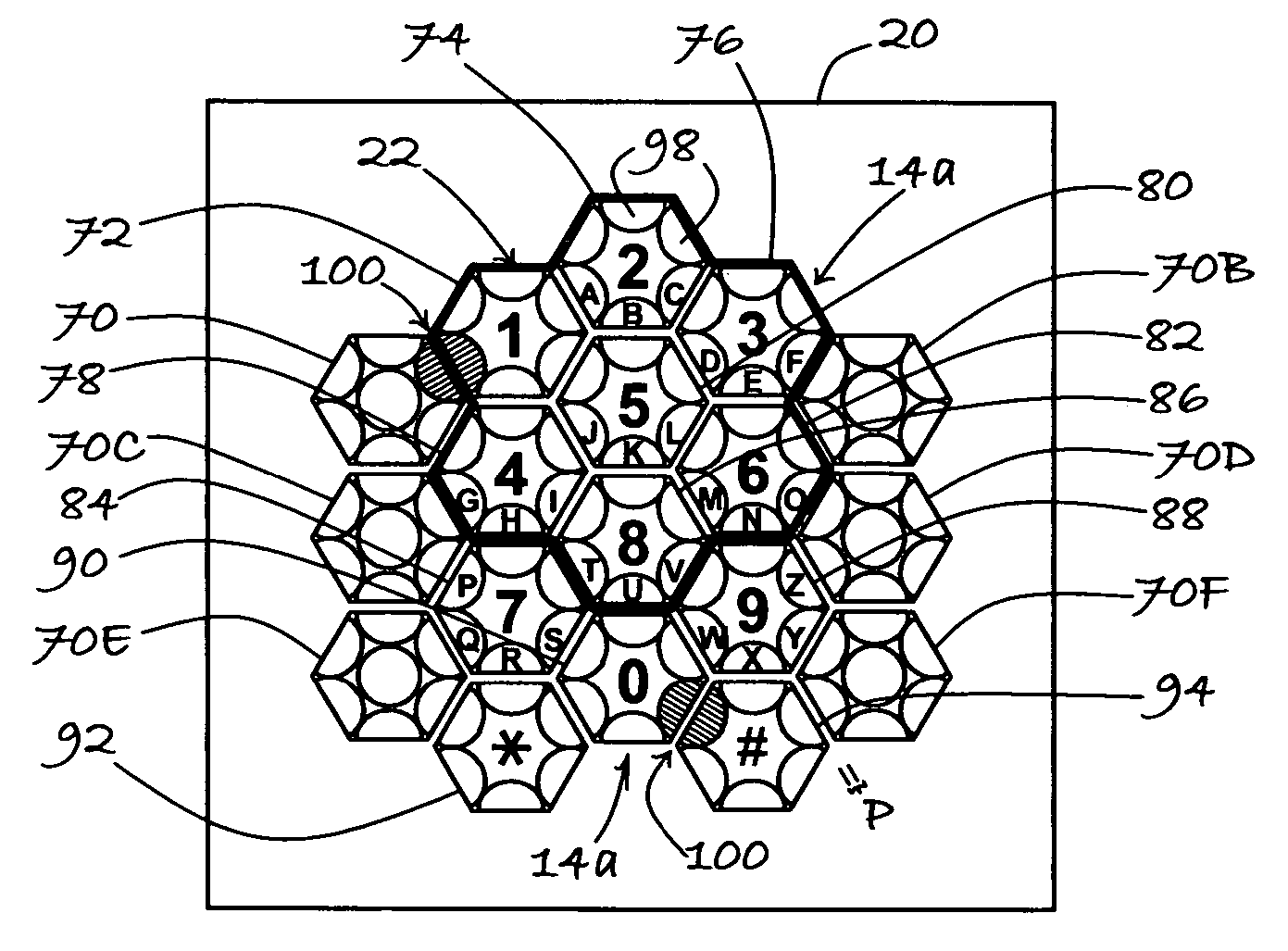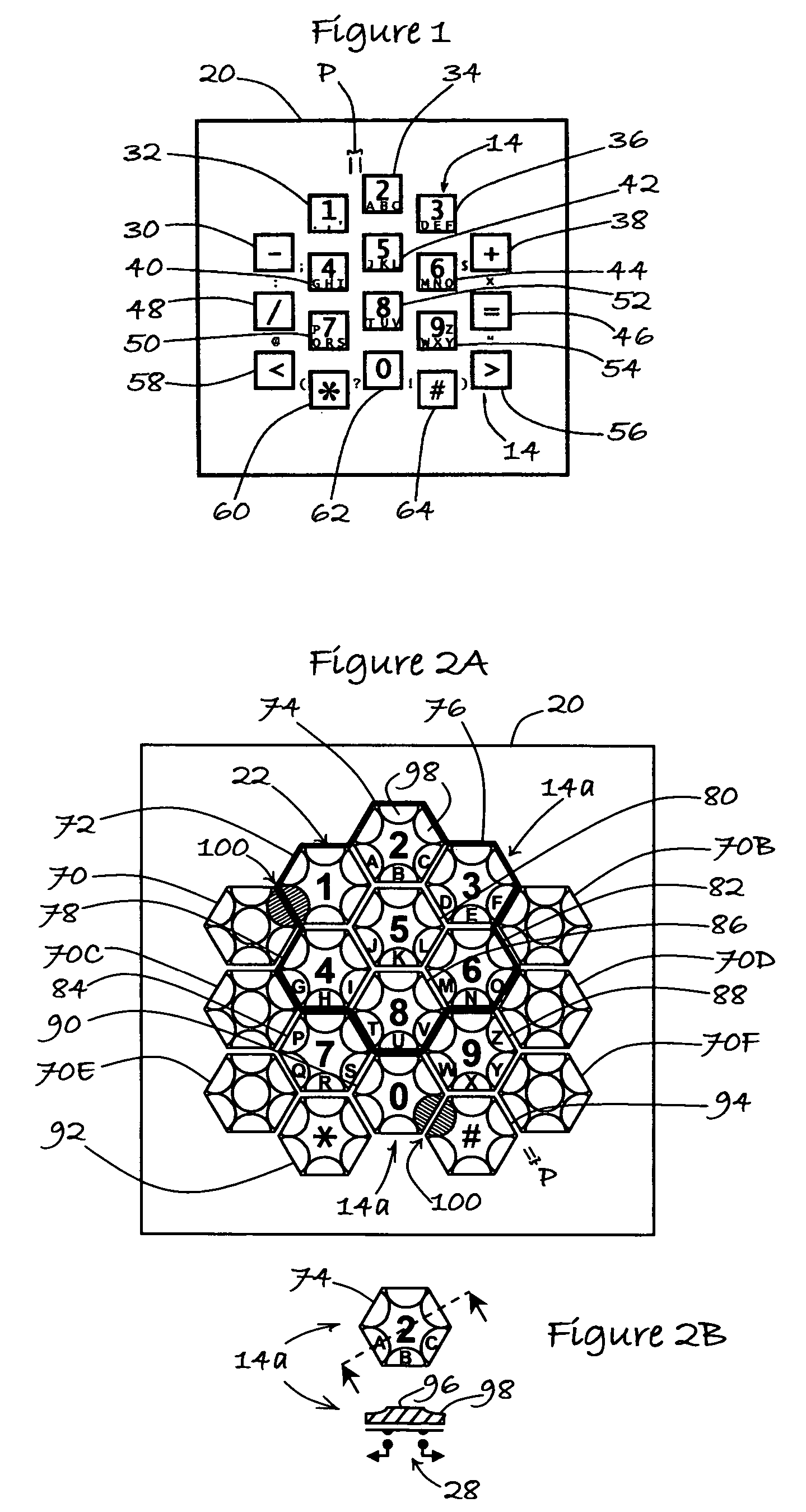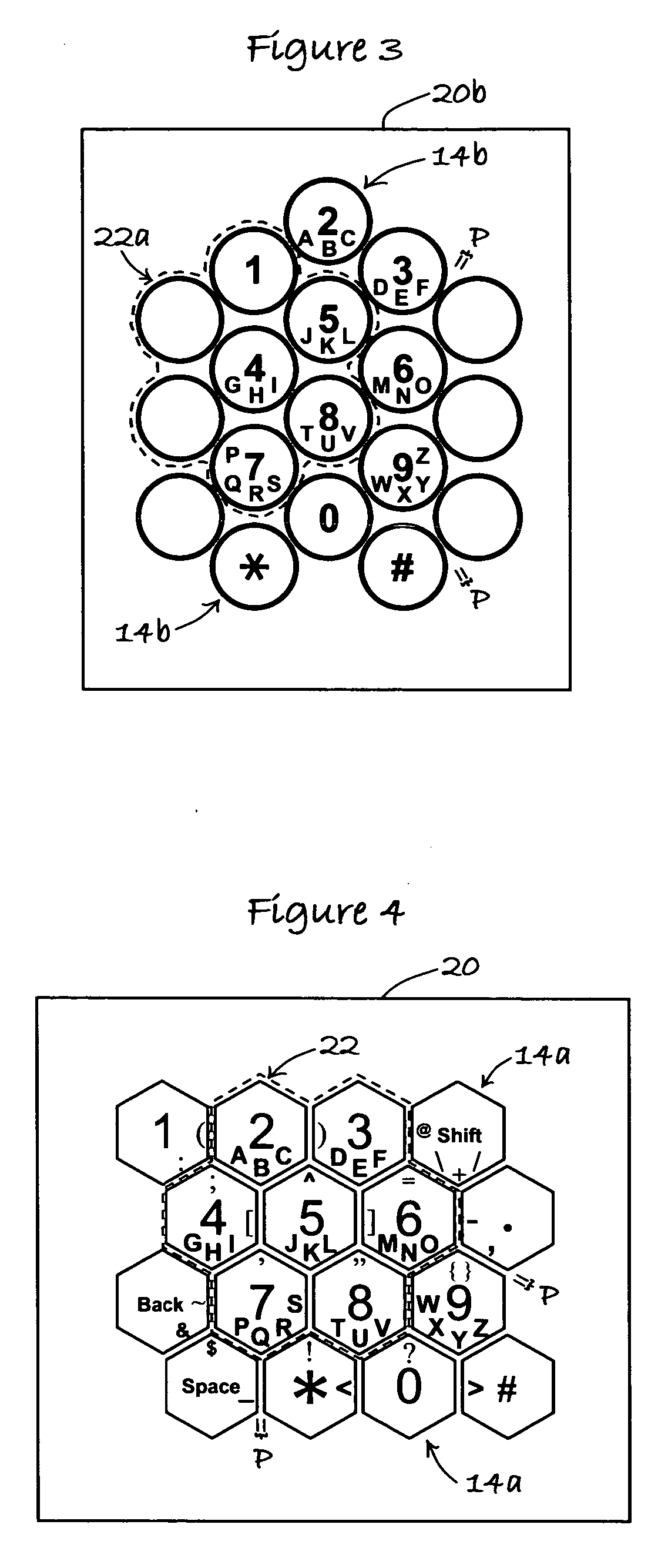Hexagonal matrix alphanumeric keypad
a keypad and matrix technology, applied in the field of communication keypads, can solve the problems of cumbersome and inefficient mode of data entry, limiting the size of qwerty keyboards heretofore, and reducing the size of portable computers, so as to reduce ambiguities and hinder “dictionary matching
- Summary
- Abstract
- Description
- Claims
- Application Information
AI Technical Summary
Benefits of technology
Problems solved by technology
Method used
Image
Examples
Embodiment Construction
[0022] Referring now to the drawings, the details of preferred embodiments of the present invention are graphically and schematically illustrated. Like elements in the drawings are represented by like numbers, and any similar elements are represented by like numbers with a different lower case letter suffix.
[0023] The present invention is a compact keypad for entering data into an electronic device. As shown in FIG. 1, the present compact keypad 20 comprises an array of individual keys 14 coding for various alphanumeric characters and mathematical functions. Each of the individual keys 30-64 are shaped and arranged in a pattern similar to the keys of the familiar plain old telephone set (POTS) keypad. The keys 30 to 64, however, have a span or pitch P separating them, such that one finger applied across the span of any pitch P between two adjacent keys will cause these two keys to be depressed simultaneously.
[0024] In a preferred embodiment exemplified in FIG. 1, depressing key 32...
PUM
 Login to View More
Login to View More Abstract
Description
Claims
Application Information
 Login to View More
Login to View More - R&D
- Intellectual Property
- Life Sciences
- Materials
- Tech Scout
- Unparalleled Data Quality
- Higher Quality Content
- 60% Fewer Hallucinations
Browse by: Latest US Patents, China's latest patents, Technical Efficacy Thesaurus, Application Domain, Technology Topic, Popular Technical Reports.
© 2025 PatSnap. All rights reserved.Legal|Privacy policy|Modern Slavery Act Transparency Statement|Sitemap|About US| Contact US: help@patsnap.com



